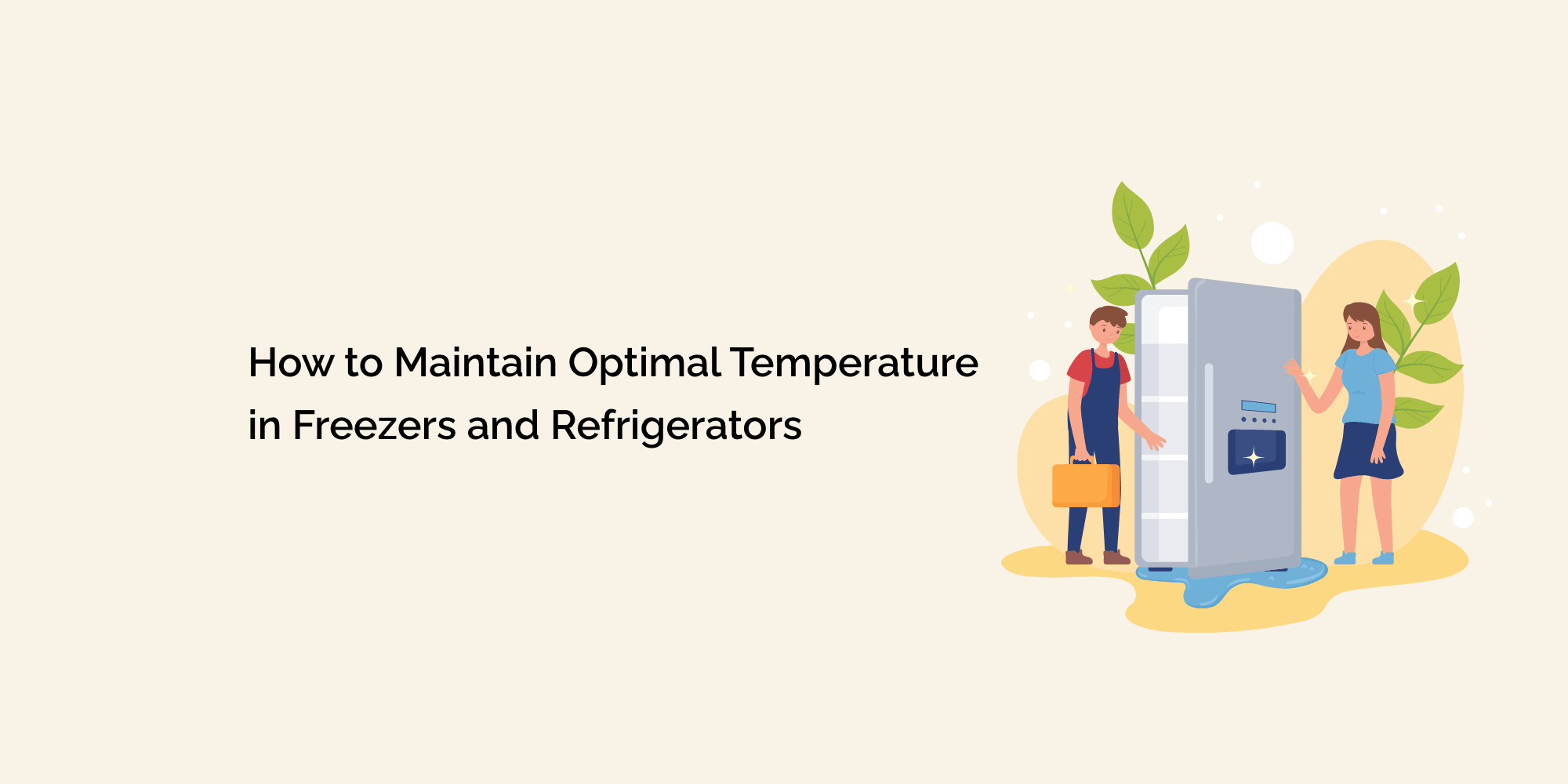Maintaining optimal temperature conditions in freezers and refrigerators is crucial for preserving the freshness, quality, and safety of perishable items. Temperature fluctuations can accelerate spoilage, compromise product integrity, and pose health risks.
In this comprehensive guide, we will explore effective strategies to maintain optimal temperature in freezers and refrigerators, with a focus on the TempCube temperature monitoring system. By implementing these practices, businesses can ensure compliance, extend shelf life, and protect their valuable inventory.
Understanding the Importance of Temperature Control
Maintaining the correct temperature range in freezers and refrigerators is essential for preventing bacterial growth, preserving nutrient content, and ensuring food safety.
Temperature control is equally vital in pharmaceutical storage, medical facilities, and laboratories. By understanding the critical role of temperature control, businesses can prioritize implementing effective temperature management practices.
Introducing TempCube: An Advanced Temperature Monitoring Solution
The TempCube is a state-of-the-art temperature monitoring system designed specifically for freezers and refrigerators. Equipped with wireless sensors, the TempCube offers real-time temperature tracking, data logging, and remote monitoring capabilities.
This innovative system ensures accurate and reliable temperature monitoring, making it an ideal choice for various industries. Implementing the TempCube can help businesses maintain optimal temperature conditions and minimize the risk of product spoilage.
Calibrating Freezer and Refrigerator Temperature Controls
Regular calibration of freezer and refrigerator temperature controls is crucial for accurate temperature management. Calibration involves verifying the accuracy of the controls against reference standards.
The TempCube simplifies this process by providing temperature sensors that can be placed strategically within the unit to ensure accurate readings. Regular calibration ensures that the temperature controls are functioning correctly and maintaining the desired temperature range.
Placing Temperature Sensors Strategically
Strategic placement of temperature sensors is vital to capture accurate temperature data and identify temperature variations within the freezer or refrigerator. When using the TempCube, consider factors such as airflow patterns, the proximity of cooling elements, and the location of stored items.
By placing the sensors strategically, businesses can effectively monitor temperature differentials and take proactive measures to maintain optimal conditions.
Monitoring Temperature in Real Time
Real-time temperature monitoring is critical for promptly identifying and addressing temperature deviations in freezers and refrigerators. The TempCube offers real-time monitoring capabilities, allowing users to access temperature data remotely. This feature enables businesses to respond quickly to temperature fluctuations, implement corrective measures, and prevent product spoilage.
Establishing Temperature Monitoring Alerts
Configuring temperature monitoring alerts is essential for immediate notification of temperature deviations. The TempCube allows users to set up customized alerts based on predetermined temperature thresholds.
These alerts can be received via email or mobile app notifications, ensuring that businesses are alerted promptly in case of temperature fluctuations. By setting up temperature monitoring alerts, businesses can take timely action to maintain optimal temperature conditions.
Conducting Regular Maintenance and Inspections
Regular maintenance and inspections are necessary to ensure the smooth operation of freezers and refrigerators. This includes cleaning condenser coils, checking door seals for proper closure, and monitoring the performance of temperature controls.
By conducting routine maintenance and inspections, businesses can identify potential issues early on and take corrective action, preventing temperature fluctuations that could impact product quality.
Utilizing Backup Power Systems
Power outages can pose a significant threat to maintaining optimal temperature conditions in freezers and refrigerators. To mitigate the risk, consider implementing backup power systems, such as uninterruptible power supplies (UPS) or generators.
These systems can provide temporary power during outages, ensuring that the freezer or refrigerator remains operational and maintains the desired temperature range.
Conclusion
Maintaining optimal temperature conditions in freezers and refrigerators is crucial for preserving the freshness, quality, and safety of perishable items. By implementing effective strategies such as utilizing the TempCube temperature monitoring system, calibrating temperature controls, strategically placing temperature sensors, monitoring temperature in real time, establishing temperature monitoring alerts, conducting regular maintenance and inspections, and utilizing backup power systems, businesses can ensure compliance, extend product shelf life, and safeguard their inventory. Prioritizing temperature control is a key step toward maintaining high standards of quality, reducing waste, and delivering safe products to consumers.








